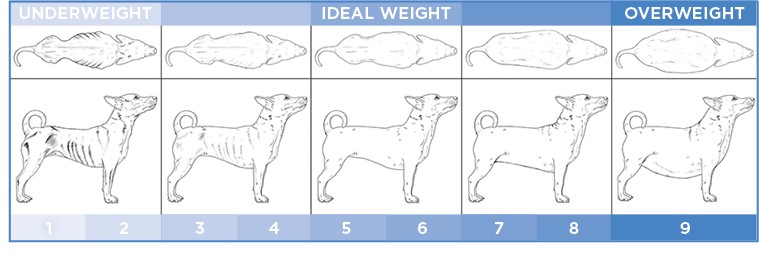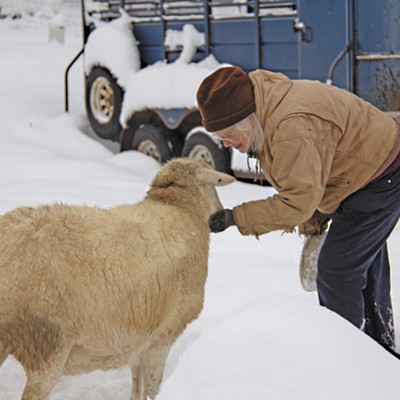As veterinarians, we deal with pet obesity every day in the clinic.
It's not shocking since most online surveys find nearly 60 percent of dogs and cats are obese. Just as in humans, poor diet and obesity are linked to joint pain and arthritis, heart disease, respiratory disease, diabetes, certain types of cancers, and other health-related problems. And just as in humans, access to high calorie diets, excessive treats, and lack of exercise drive obesity.
Yet far too often, people don't recognize the reversible signs of obesity in their animals before these complications and others take hold. There are many improvements owners can do. Things like decreasing treats, cutting out human food and ensuring animals get appropriate exercise all play a role. It's also critical to diagnose pet obesity early, and anyone can do that using the same method as their veterinarian — a body conditioning score.
The body conditioning score requires pet owners to evaluate their animals to determine their overall weight health. Typically scores range from one to nine, with four and five being the ideal weight.
While many clinics have their own body conditioning scales, most are similar. Owners can palpate the ribs of their animal and check to see if they can feel their pet's spine; the two areas where dogs and cats have palpable fat covering. If they can't feel the animal's ribs or spine, it is a strong indicator there may be too much fat covering them. On the other hand, if the animal's ribs are easily visible, they can be underweight.
The body conditioning score also includes looking to ensure a dog's flank, the area of the abdomen right before it meets the hind leg, is tucked behind the leg. When looking down on the pet's back, they should have a slight hourglass shape. If there is no flank and it looks like their chest and abdomen meet their back legs, a dog is overweight.
Body conditioning scores can be especially helpful in assessing boxier dogs, like bulldogs, that can be hard for owners to judge.
Checking body conditioning scores for cats is critical too. Cats usually don't see the veterinarian as often as dogs, and due to their survival instincts, they tend to hide joint pain caused by excess weight. A combination of these factors makes recognizing pain and health issues in cats difficult.
Senior pets are especially susceptible to weight-related complications, so it is important to ensure pets are not overweight before entering their final years. Older dogs and cats exercise less frequently, so burning off the fat can be more difficult in later years.
The best thing an owner can do for their animal is limit treats (human and pet) and keep their dog on a healthy, balanced diet. The most reputable pet food is regulated and approved by the Association of American Feed Control Officials.
Pet owners can jeopardize a pet's health with too much food kindness, and possibly shorten their life by obesity health problems. But by paying attention to your pet's weight, you can help your furry friend stay healthy and active.
Jessica Bell is an assistant professor at WSU College of Veterinary Medicine and a small animal veterinarian in community practice at WSU's Veterinary Teaching Hospital.

























